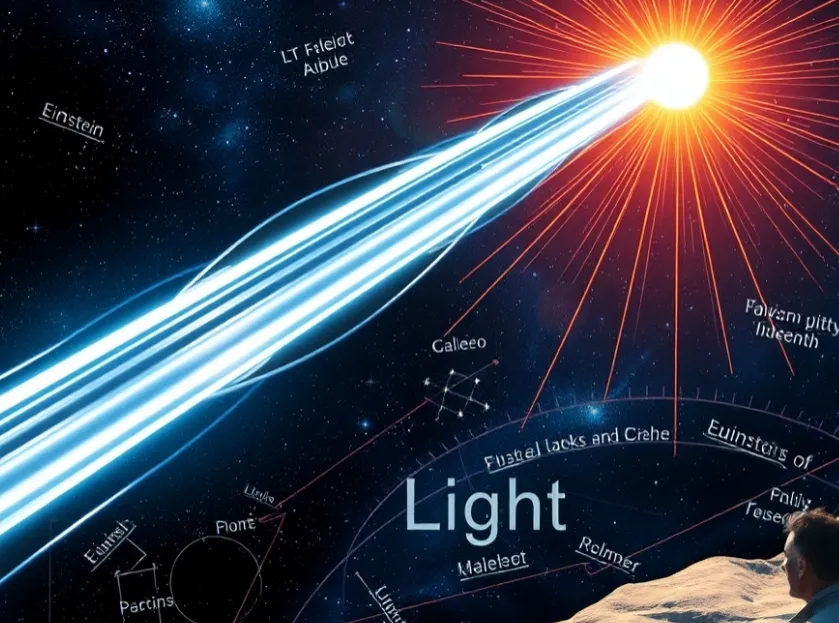Table of Contents

Introduction
Since the dawn of science, light has been a subject of wonder and inquiry. Known as the fastest entity in the universe, understanding its nature and speed has undergone numerous setbacks and triumphs. This article takes us on a journey through time, from ancient beliefs to modern discoveries that have shaped our understanding of the speed of light.
Ancient Times: The Myth of Infinite Speed
In ancient times, many societies believed that light could travel without limits and at an infinite speed. It was thought that light moved instantaneously, which made the cognitive process of understanding how to measure it a significant challenge. This idea was prevalent across various cultures, where light was often regarded as a symbol of wisdom and knowledge.
Galileo Galilei: The Experimental Beginning
In the early seventeenth century, the Italian physicist Galileo Galilei became one of the first to attempt to measure the speed of light, paving the way for empirical science. Galileo conducted a simple experiment where two individuals stood a known distance apart, each holding covered lanterns. When one person uncovered his lantern, the other was tasked with uncovering his lantern upon seeing the light. However, Galileo’s results were disappointing; the distances involved were too small, and the speed of light exceeded his ability to measure time accurately. Nevertheless, his efforts marked a significant step in the transition from beliefs to experimentation.
Ole Roemer: The First Proof of Finite Speed
About 70 years after Galileo’s efforts, Danish astronomer Ole Roemer made a revolutionary contribution to the understanding of light speed. In 1676, Roemer conducted pivotal studies on the moons of Jupiter, achieving one of the most notable astronomical feats of that era. He observed that the timing of the eclipses of these moons changed depending on Earth’s position in its orbit around the Sun, leading him to conclude that light takes time to travel, thus demonstrating that it does not travel instantaneously, but at a finite speed.
Advancements in Measurement: A Physics Revolution
As the scientific revolution continued, researchers aimed to measure the speed of light with greater precision. In 1849, French physicist Hippolyte Fizeau made significant strides in this field. He employed a non-astronomical method, sending light through a rotating toothed wheel and reflecting it back with a mirror set at a known distance. His innovative approach produced results that advanced the understanding of light speed substantially.
Following Fizeau, American physicist Albert Michelson conducted precise measurements of light speed in the 1920s. He used a complex apparatus involving an eight-sided rotating mirror to calculate the speed with unprecedented accuracy. The results of his research became a cornerstone in physics and earned him the Nobel Prize in Physics in 1907.
The Modern Definition of Speed
In 1983, the International Committee for Weights and Measures established a modern and precise definition of the speed of light, setting it at 299,792,458 meters per second (186,282 miles per second). This speed represents the fixed number used in scientific and technological applications, making light one of the fundamental dimensions in physics.
Impact and Practical Applications
The speed of light serves as a cornerstone in many scientific fields, from Einstein’s theory of relativity to modern communication technologies. Technologies such as lasers, GPS systems, and wired and wireless communications heavily rely on understanding this speed and its constancy in a vacuum. The laws governing light’s motion also enhance cosmic physics concepts, opening new avenues for understanding the universe’s structure.
You Might Like : Lunar Eclipse: An Astronomical Phenomenon that Captivates Minds
The journey of discovering the speed of light stands as a remarkable example of scientific evolution. It began with ancient beliefs and advanced through several eras of courageous scientists who laid the foundation for modern science. Our understanding of light’s speed not only facilitates scientific breakthroughs but also enriches our daily lives through the practical applications we benefit from today. The full story of the discovery of light speed is a testament to the relentless pursuit of knowledge and its transformative power over human understanding.
